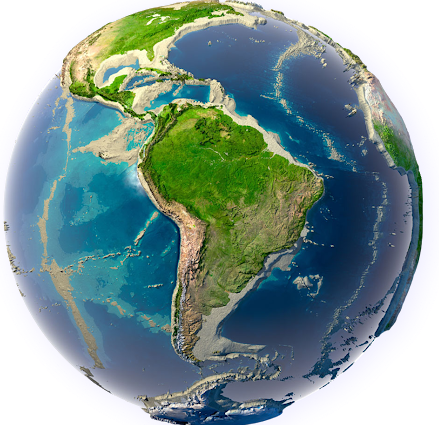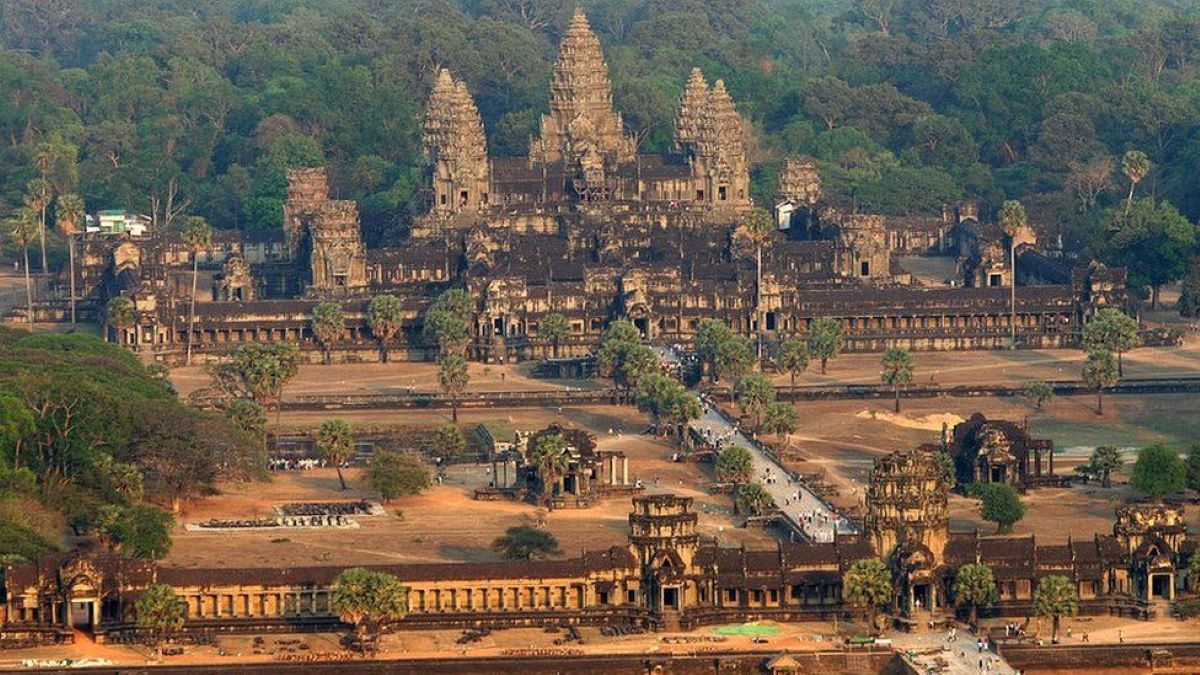Cambodia, a captivating country in Southeast Asia, is rich in history, culture, and natural beauty. With its population exceeding 16 million, Cambodia is a nation that has experienced significant transformations over the centuries. From its ancient civilizations to its struggles in the 20th century, Cambodia’s story is one of resilience, strength, and hope. This blog delves into the geography, history, culture, and cuisine of Cambodia, providing a comprehensive overview of this enchanting nation.
Table of Contents
Geography and Climate
‘Located in the heart of Southeast Asia, Cambodia is bordered by Thailand to the northwest, Laos to the north, and Vietnam to the east and south. The country encompasses an area of approximately 181,035 square kilometers, characterized by a diverse landscape that includes mountains, plains, rivers, and the famous Tonle Sap Lake. The Mekong River, one of the longest rivers in the world, flows through Cambodia, playing a crucial role in the country’s agriculture and transportation.
Cambodia’s geography is marked by its low-lying plains, which are interspersed with hilly regions, notably in the northeast. The southwest coast features beautiful beaches and islands along the Gulf of Thailand. The climate in Cambodia is tropical, with a distinct wet and dry season. The dry season lasts from November to April, while the wet season spans from May to October. Temperatures typically range from 25°C to 35°C (77°F to 95°F), making Cambodia a warm destination year-round. The best time to visit is during the dry season when the weather is cooler and more pleasant for outdoor activities.
States Of Cambodia
Cambodia is divided into 25 provinces and municipalities, which are often referred to as “states” in some contexts. Each province has its own capital and administrative structure. The capital city of Cambodia is Phnom Penh, which is also a municipality.
Here’s a table listing the provinces and municipalities of Cambodia, along with their capitals:
| No. | Province/Municipality | Capital |
|---|---|---|
| 1 | Phnom Penh | Phnom Penh |
| 2 | Battambang | Battambang |
| 3 | Banteay Meanchey | Poipet |
| 4 | Kampong Cham | Kampong Cham |
| 5 | Kampong Speu | Kampong Speu |
| 6 | Kampot | Kampot |
| 7 | Kandal | Ta Khmau |
| 8 | Kep | Kep |
| 9 | Preah Sihanouk | Sihanoukville |
| 10 | Pursat | Pursat |
| 11 | Ratanakiri | Banlung |
| 12 | Siem Reap | Siem Reap |
| 13 | Preah Vihear | Preah Vihear |
| 14 | Stung Treng | Stung Treng |
| 15 | Svay Rieng | Svay Rieng |
| 16 | Takeo | Takeo |
| 17 | Oddar Meanchey | Samraong |
| 18 | Kratie | Kratie |
| 19 | Mondulkiri | Mondulkiri |
| 20 | Tboung Khmum | Tboung Khmum |
| 21 | Sihanoukville | Sihanoukville |
| 22 | Kandal | Ta Khmau |
| 23 | Kampong Chhnang | Kampong Chhnang |
| 24 | Banteay Meanchey | Poipet |
| 25 | Koh Kong | Koh Kong |
Historical Background
Cambodia has a rich and complex history that can be traced back to the Khmer Empire, which flourished from the 9th to the 15th centuries. The Khmer Empire was known for its remarkable architectural achievements, advanced irrigation systems, and cultural accomplishments. During this period, the empire expanded its territory, reaching parts of present-day Thailand, Laos, and Vietnam.
The most iconic symbol of Cambodia’s historical legacy is Angkor Wat, a UNESCO World Heritage Site and one of the largest religious monuments in the world. Originally built as a Hindu temple dedicated to the god Vishnu, Angkor Wat later transformed into a Buddhist temple, reflecting the religious transitions that occurred over the centuries. The intricate carvings and stunning architecture of Angkor Wat attract millions of visitors each year, making it a must-visit destination for anyone traveling to Cambodia.
In the 15th century, the Khmer Empire began to decline due to internal strife and external pressures from neighboring kingdoms. This decline continued for centuries, leading to the eventual colonization by the French in the late 19th century. Cambodia remained under French rule until gaining independence in 1953, after which it faced political turmoil and civil conflict.
The Khmer Rouge regime, led by Pol Pot from 1975 to 1979, brought about one of the darkest chapters in Cambodian history. The regime sought to create an agrarian socialist society, resulting in the deaths of an estimated 1.7 million people due to starvation, forced labor, and execution. The impact of this tragic period is still felt today, but the resilience of the Cambodian people has allowed the nation to rebuild and recover.
Cultural Heritage
Cambodia’s culture is a rich tapestry woven from its historical experiences, religious beliefs, and artistic expressions. The predominant religion is Theravada Buddhism, which plays a central role in the daily lives of Cambodians. The country is dotted with thousands of temples, each showcasing intricate carvings and stunning architecture.
Traditional Cambodian dance, known as “Apsara,” is a significant cultural expression that combines graceful movements with elaborate costumes. The performances often depict stories from Hindu and Buddhist mythology, celebrating the country’s rich spiritual heritage. Visitors can experience these performances in cultural shows, particularly in Siem Reap, the gateway to Angkor Wat.
Festivals are an essential aspect of Cambodian culture, with the most significant being the Khmer New Year (Chaul Chnam Thmey) celebrated in April. This three-day celebration involves various traditional activities, including dancing, playing games, and visiting temples. The Water Festival (Bon Om Touk) is another important event, marking the end of the rainy season and the reversal of the Tonle Sap River’s flow. Colorful boat races and festivities along the riverbanks attract both locals and tourists.
Top Ten Must-Visit Destinations
Cambodia, a country rich in history and culture, offers a diverse array of attractions for travelers. From ancient temples to vibrant cities, each destination tells a unique story and showcases the nation’s heritage. Here are the top ten must-visit destinations in Cambodia that every traveler should explore.
1. Angkor Wat

Angkor Wat, the crown jewel of Cambodia, is the largest religious monument in the world and a UNESCO World Heritage Site. Built in the early 12th century, this temple complex was originally dedicated to the Hindu god Vishnu before transforming into a Buddhist site. Angkor Wat is renowned for its stunning architecture, intricate bas-reliefs, and vast moats. Visitors can explore its impressive structures, including the central temple, which offers breathtaking sunrise views.
2. Bayon Temple
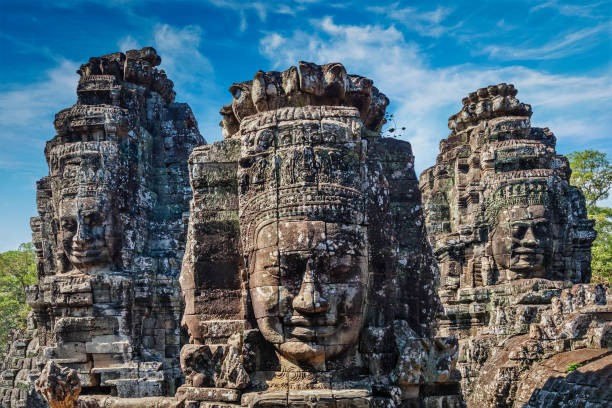
Located in the ancient city of Angkor Thom, Bayon Temple is famous for its enigmatic stone faces that smile down upon visitors. Built in the late 12th century, Bayon features over 200 large stone faces believed to represent Avalokiteshvara, the bodhisattva of compassion. The temple is adorned with intricate carvings depicting historical and mythical scenes, making it a must-visit for history and art enthusiasts.
3. Ta Prohm

Ta Prohm, another iconic temple in the Angkor complex, is known for its unique blend of nature and architecture. Famous for the massive tree roots that entwine with its crumbling stones, this temple was left largely in its natural state, offering a glimpse into the power of nature reclaiming human creations. The site gained popularity after being featured in the film “Tomb Raider,” and it continues to captivate visitors with its haunting beauty.
4. Phnom Penh’s Royal Palace

The Royal Palace in Phnom Penh is a stunning architectural masterpiece and the official residence of the Cambodian king. The complex includes the Silver Pagoda, named for its floor made of silver tiles, which houses numerous national treasures. Visitors can explore the beautifully landscaped gardens, intricate buildings, and vibrant murals depicting Cambodian history. The Royal Palace is an important cultural symbol and offers insights into the country’s monarchy.
5. Killing Fields of Choeung Ek
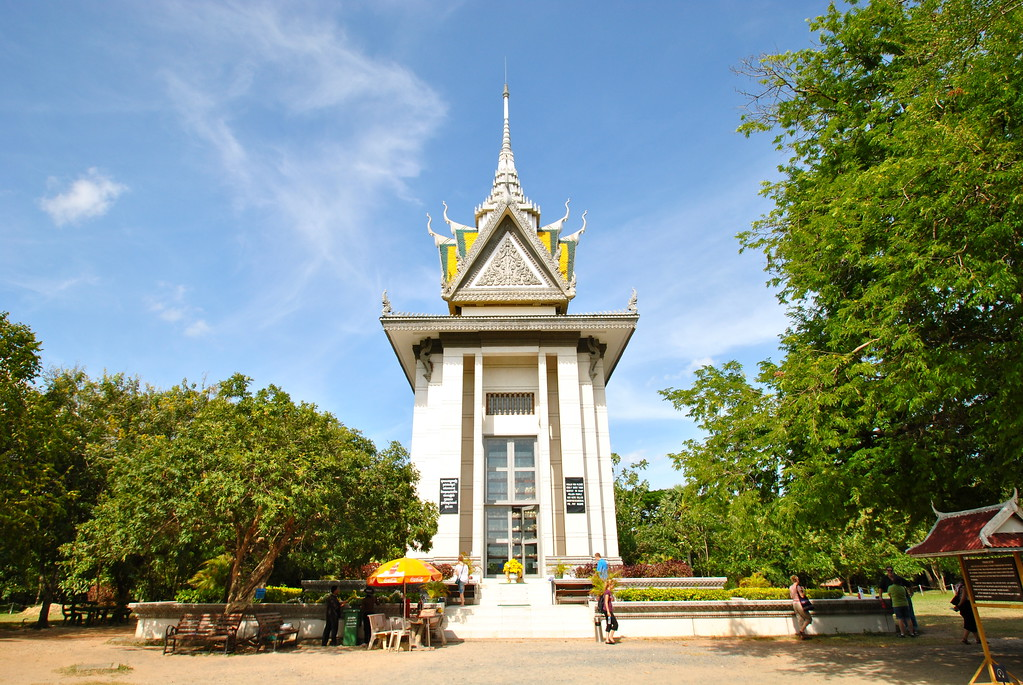
A somber yet essential destination, the Killing Fields of Choeung Ek serves as a memorial to the victims of the Khmer Rouge regime. This site is where thousands of Cambodians were executed during the genocide. Visitors can walk through the memorial, view the mass graves, and learn about the tragic history through informative displays. It’s a poignant reminder of Cambodia’s past and the resilience of its people.
6. Sihanoukville

Sihanoukville, a coastal city, is known for its beautiful beaches and vibrant nightlife. The city serves as a gateway to several stunning islands, including Koh Rong and Koh Rong Samloem, which boast pristine beaches and crystal-clear waters. Visitors can enjoy various water activities, relax on the sandy shores, and experience the lively atmosphere of beachside bars and restaurants.
7. Tonle Sap Lake

Tonle Sap Lake, Southeast Asia’s largest freshwater lake, is a UNESCO Biosphere Reserve and a vital resource for millions of Cambodians. The lake is famous for its floating villages, where people live and work on the water. A boat tour on Tonle Sap offers visitors a chance to experience the unique lifestyle of the local communities and witness the diverse wildlife that inhabits the area.
8. Battambang

Battambang, Cambodia’s second-largest city, is known for its well-preserved colonial architecture and rich agricultural surroundings. Visitors can explore the city’s vibrant markets, sample local delicacies, and take a ride on the famous bamboo train. Battambang also serves as a base for exploring nearby temples and the stunning countryside, making it a great destination for those seeking a more authentic experience.
9. Koh Rong Island
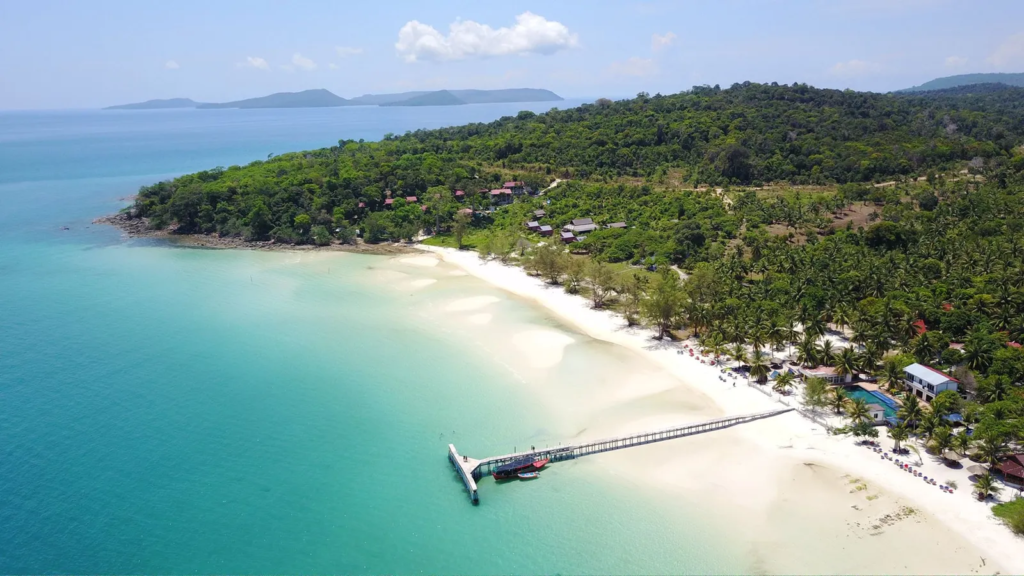
Koh Rong Island is a tropical paradise known for its pristine beaches, clear turquoise waters, and lush jungle. This idyllic island offers opportunities for snorkeling, diving, and hiking. Visitors can unwind on the stunning beaches, explore vibrant coral reefs, or partake in beach parties at night. Koh Rong is perfect for those looking to escape the hustle and bustle of city life and immerse themselves in nature.
10. Preah Vihear Temple

Perched atop a 625-meter cliff in the Dângrêk Mountains, Preah Vihear Temple is a UNESCO World Heritage Site that offers stunning views of the surrounding landscape. This ancient Hindu temple dates back to the 9th century and is dedicated to the god Shiva. The journey to the temple involves a scenic hike, and the breathtaking vistas make it a rewarding destination for adventure seekers and history buffs alike.
Cambodia is a land of contrasts, where ancient history meets modern life. Each destination offers a unique glimpse into the country’s rich cultural heritage and natural beauty. From the awe-inspiring temples of Angkor to the serene beaches of Koh Rong, Cambodia promises an unforgettable experience for every traveler. As you explore these must-visit destinations, you’ll discover the enduring spirit and warmth of the Cambodian people, making your journey truly memorable.
Culinary Delights
Cambodian cuisine, known as “Khmer food,” is a delightful blend of flavors and ingredients influenced by neighboring countries, including Thailand and Vietnam. Rice is a staple in Cambodian meals, and the country offers a variety of dishes that highlight fresh vegetables, herbs, and spices.
One of the most famous dishes is “Amok,” a fragrant curry made with fish, coconut milk, and spices, steamed in banana leaves. Another popular dish is “Lok Lak,” which consists of marinated beef stir-fried and served with rice, salad, and a tangy dipping sauce. Cambodian street food is also a must-try, with vendors offering snacks like fried insects, noodle soups, and sweet desserts.
The vibrant markets of Cambodia, such as the Central Market in Phnom Penh and the Old Market in Siem Reap, are excellent places to sample local delicacies and experience the lively atmosphere. Visitors can find fresh produce, spices, and traditional handicrafts while indulging in delicious street food.
Top Eight Most Famous Food of Cambodia


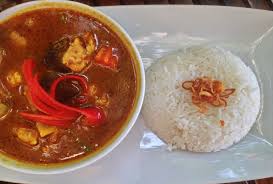
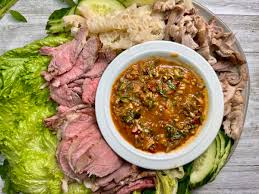



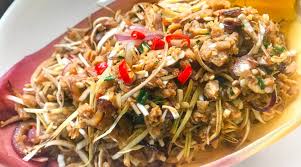
The Resilience of the Cambodian People
The resilience of the Cambodian people is a testament to their strength and determination to overcome adversity. Despite facing numerous challenges throughout history, Cambodians have shown remarkable resilience in rebuilding their nation and preserving their cultural heritage. Community initiatives and grassroots organizations have played a vital role in promoting education, healthcare, and economic development.
Cambodia’s youth are increasingly becoming involved in preserving their culture while embracing modernity. Traditional arts and crafts, such as silk weaving and stone carving, are being revitalized, and young Cambodians are taking pride in their heritage. The growth of tourism has also provided opportunities for local communities to showcase their culture and share their stories with visitors.
Conclusion
Cambodia: The Land of Ancient Temples and Timeless Treasures is a nation that offers a unique blend of history, culture, and natural beauty. From the awe-inspiring temples of Angkor Wat to the vibrant streets of Phnom Penh, visitors are sure to be captivated by the charm and resilience of the Cambodian people. As the country continues to recover from its tumultuous past, it embraces its rich heritage while welcoming travelers from around the world. Exploring Cambodia is not just a journey through stunning landscapes; it’s an opportunity to connect with a culture that has endured through the ages.
let’s enjoy few years on earth with peace and happiness….✍🏼🙏
